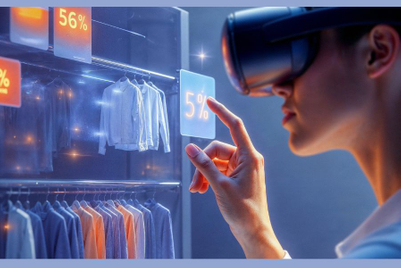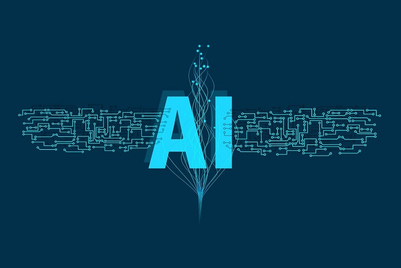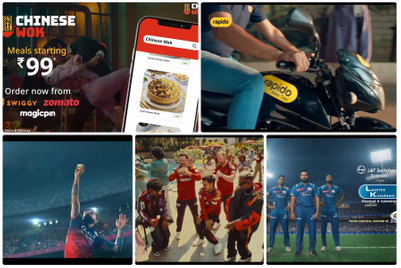
Near the end of each year, agencies issue highly polished reports designed to demonstrate how smart they are by highlighting the trends that will be important in the coming year. Once upon a time, these reports arrived with literal thuds—in glossy printed form. These days, for reasons that surely have everything to do with sustainability and nothing whatsoever to do with budgets, they tend to come in massive PDF files. Whether the company limits itself to just a few mega-trends or selects an eye-watering 100 trends, it's a lot to digest.
So we've gone and done it for you. We've cut out all the 'no shit, Sherlock' moments, in favour of novel trends or at least instances where the advice about fairly obvious topics was worthwhile.
Sources:
- Fjord: 2018 Fjord Trends
- iProspect: Future Focus 2018: The New Machine Rules
- Isobar: Augmented Humanity: Isobar Trends Report 2018
- J. Walter Thompson Innovation Group: The Future 100
- Ogilvy & Mather: Key Digital Trends for 2018
(Everything below is taken verbatim from the reports themselves, with the exception of a few headings. We made some deletions for brevity.)

Humans and machines
(Fjord)
Where once the “threat” to jobs was the introduction of production lines, typewriters or motorized vehicles, the hot topic now is the rise of Artificial Intelligence and robots. Organizations must stop talking about it and start designing for this change, by coming to terms with how to enable people and machines to get the best out of each other.
What it means for brands:
- Think collaboratively, not competitively. Let people do what they do best and let machines do what people do worst. ... Remember to take your people on the journey with you—to build trust in the impact of machine learning and AI, they must feel reassured, included and informed.
- Design for interaction. ... Design machines to ask questions and clarify their instructions: less ambiguity = a lower error rate.
- Algorithmic transparency should be central to your brand values. Staff and customers alike must have an understanding of how decisions are being made. Technology fails when it is not inclusive. AI has the potential to fail on a grand scale. Ensure diversity of people, data, and AI-enabled machines to keep biases in check.
- Future-plan for staff evolution: Who trains the next generation if AI is doing all the junior work? Organizations need a plan for enabling their staff to evolve.

AR is going to be everywhere
(Ogilvy)
Proliferation of good mobile tech? Check. Vastly improved AR platforms? Check. Mass-user penetration of said platforms: Check.
What it means for brands:
- It may be as simple as creating a custom bitmoji for your brand character or it may be speaking to your Facebook or Google rep about how you get on the AR train early.
- Don’t blow your money on Snapchat activations.
- Look at where the real cut-through is happening.
- Speak to the professionals. Now.

Resurgent religion
(JWT)
After years of consumers turning more secular, religion is making a comeback in some places, following major social and economic shifts. This trend is perhaps most surprising in China, where various forms of religion—Buddhist, Daoist and Christian—are flourishing with the tacit approval of the government after a century of persecution. ... In many cases, people who benefited from China’s rapid economic growth and urbanization are now seeking spiritual sustenance. Around Southeast Asia, which has also seen rapid urbanization, an Islamic lifestyle is emerging at the confluence of rising piety and rising consumerism.
What it means for brands:
- Rapid industrialization and social change have led to a yearning among many for a new moral compass and a sense of identity and community—which some people are seeking in religion.
- Brands that try to tap into this need to be careful not to risk looking exploitative or tone deaf.

Putting the consumer at the centre (for real)
(iProspect)
Marketers will move increasingly from a siloed, channel-based approach to advertising, to a consumer based approach, bringing together data and resources from different parts of the organisation to facilitate a true 360-degree consumer view. The concept of ‘consumer moments’ will become widespread in 2018, encouraging marketers to seek out data signals that help them understand not just who their customers really are, but what are the moments that matter most as those consumers interact with brands at different stages of the purchase journey.
What it means for brands:
- Data visualisation will take on renewed importance in 2018 and we can expect to see brands moving from simply reporting what has happened, to more diagnostic analytics that look at the “why” rather than the “what.”
- For the more advanced marketers, 2018 will see steps toward more predictive modelling and analytics with a focus on predicting and planning for likely future outcomes.

The 'tragedy of the commons' strikes influencer marketing
(Ogilvy)
With attention and buzz comes a lot of nonsense and too many bad actors. ... Too many brands and agencies throw money at influencers and direct them to make content and endorse products that undermine their authenticity. The industrialisation of influencer marketing through agents, agencies, and budgets that are too big in comparison to the potential for real impact only makes the problem worse.
What it means for brands:
- Compensate, don’t over-pay. ... Too much cash distorts the value for everyone.
- Follow the rules. Most countries now have requirements that influencers include ‘ad’ tags. Do this.
- Protect authenticity at all costs. If you can’t come up with a concept that’s authentic for both brand and influencer, don’t go forward.
- Co-create, don’t instruct. Be ready to hand over creative control to the influencer. You picked them because you loved what they were doing and, more importantly, so does their audience.

Lab-grown luxury
(JWT)
Luxury materials are the new frontier. Disruptive companies are seeking to create alternatives to
traditional commodities, or innovating to create sustainable luxurious fabrics.
What it means for brands:
- Sustainability, formerly regarded as antagonistic to everything luxurious, is now taking on luxury connotations itself. Innovating in sustainability is becoming viewed as intelligent and aspirational, precisely the values that luxury brands try to convey in their messaging.

Disruption comes to FMCG
(Isobar)
Digital disruption has been slower to impact packaged goods companies than other sectors; a majority of FMCG brands are still sold offline, in familiar distribution, at familiar price points. However, a cluster of direct to consumer propositions have sprung up in recent months to challenge that orthodoxy, something that may prove to be increasingly important as Amazon disrupts grocery retail.
What it means for brands:
- A significant opportunity for brands is to use direct to consumer models to experiment with new categories, new price points or emerging trends that might struggle to gain distribution in conventional retail.
- These may be high growth areas for mature businesses, enabling the company to learn, prove and scale.
- The opportunity is to think of a range of retail platforms as complimentary and mutually reinforcing rather than an either / or mentality.

Femtech revolution
(JWT)
Trailblazing female entrepreneurs are leading a new wave of fem-centric health tech, creating smart products designed around women’s physical needs.
What it means for brands:
- For a long time, Big Tech giants largely ignored women as a consumer technology market, but that’s changing.
- As a market, women represent an opportunity bigger than China and India put together, controlling $20 trillion in consumer spending.
- This new wave of female-led startups is creating tech health products with a female-centric, empathetic lens and a refreshing design aesthetic to meet this powerful consumer group’s needs.

Transparency through blockchain
(Fjord)
It’s hard to judge what’s authentic in a digital world where it’s almost impossible to identify the origin of information and who has had a hand in changing it. Worse still, falling trust in key institutions has
compounded the issue. In 2018, designers will do a lot of work using blockchain—a potential solution to this trust crisis—but they will need to help people understand it and build faith in it. Organisations will need to shift their emphasis from “touch points” to “trust points” when carving out market differentiation.
What it means for brands:
- Take understanding blockchain off the “too hard to do” list and educate yourself and your workforce (all employees, not just those in technology roles) about its potential. Blockchain is not just a “deep technology” phenomenon—it’s a gamechanger.
- Design for trust: To earn trust, an organization must be transparent. It will be important to design new navigation systems that simplify complex business processes and demonstrate transparency. Once the trust crisis is addressed, we will see new services emerge, which will capitalize on far deeper levels of trust.
- Open up for collaboration: Despite significant investment, scaled implementation of blockchain technologies is slow due to many industries’ wariness about privacy, governance, protection and the high degree of collaboration required to share and store data. Collaborate with trusted partners to maximize blockchain’s potential.

Internet of Eyes
(JWT)
What it means for brands:
- Advancements in machine learning mean that cameras could one day recognize individuals, learn habits, measure emotion and more—with significant ramifications for retail, marketing, and beyond.

Biased AIs demand attention
(Isobar)
Algorithms have begun to regulate more and more of the decisions affecting our lives, yet are “learning” from implicit biases embedded in the ways we use language.
What it means for brands:
- Companies relying on automation when it comes to choosing job candidates, prioritising customers or vetting applications for, say, mortgages or credit cards will need a robust understanding of how their algorithms are designed and any implicit biases encoded therein.
- Checks and balances will need to be built into processes to uncover and adjust for these issues. ”A robot did it” will not be a satisfactory excuse for good corporate citizens.
- As interfaces become more human, with greater reliance on image and voice recognition, brands will need to ensure that the software is not being trained to respond only to one kind of face, or one kind of voice. The key to that will be developing diverse teams to ensure our algorithms are receiving diverse input.

Brandlessness
(JWT)
A wave of disruptive new companies is offering premium beauty, personal care, and groceries at a fraction of the cost of branded equivalents.
What it means for brands:
- In many ways, these models hit a sweet spot for millennials. They are transparent, ethical, cost-conscious and digital-first.
- Millennials, apparently less susceptible to traditional branding and advertising, are increasingly backing high-quality private label offerings

Personal retail
(Isobar)
AI delivers increasingly personalised retail experiences.
What it means for brands:
- As digital pricing displays become the norm, and mobile remains ubiquitous it is not impossible to imagine retailers surfacing different price points for different individuals based on a host of contextual information.
- These technologies require brands to build an ever deeper understanding of their brand voice, and how humans and machines come together to deliver that voice.

Amazon ascendant
(Ogilvy)
Amazon will be the most important emerging platform for digital advertising in 2018.
What it means for brands:
- Get savvy AF, fast. If you’re new to this, get yourself to advertising.amazon.com and read up. There are a LOT of ad solutions.
- Having just a working knowledge of this full suite, along with the variety of options available to new adbuyers is worth spending time on.
- Remember: being savvy also means having the right judgement.
- The experts in the room say that FOR NOW, if you don’t sell anything on Amazon, it probably isn’t worth spending on (yet).

Millennial travel evolved
(JWT)
Though millennials are reputed to be budget-conscious travelers, this generation is rapidly shedding its gap-year lifestyle. Will the travel industry grow up with them?
What it means for brands:
- The next generation of adults will soon command significant disposable income: $1.4 trillion in annual spending in the United States alone by 2020.
- Expect millennials’ taste to evolve beyond hostel hopping and budget flights. Hospitality brands will score through a combination of affordability and style.

The end of typing
(Ogilvy)
Voice and image recognition become the dominant interface. ... The most common uses are pretty utilititarian. But that’s changing, as users ask for help planning travel and managing their day. Humans can speak 150 words per minute, while typing on mobile tops out at 40 words per minute. And the tech has improved dramatically. Error rate from speech recognition is down to 5 percent. So people find it faster and more accurate that text. And they can use it while driving.
What it means for brands:
- Users will increasingly engage with technology in more natural and instinctive ways. Technology will have to do a better job of understanding us and all of the nuance that comes with natural language.
- They affect how information and content are developed and delivered. They especially affect SEO and SEM, but will increasingly impact how apps and platforms are developed, and whether they are well designed for voice and other non-tactile interfaces. A whole new generation of UX design is born…
- What happens when you ask Google, or Siri, or Alexa to search for your brand or product? What happens when you search for the common queries behind using your brand or product?
- Side note: Do not make the Burger King ad. Hijack is a bad word for a reason.

So long, anti-aging
(JWT)
Legacy skincare brands are repositioning for millennials seeking honest, transparent marketing, and a break from the anti-aging narrative.
What it means for brands:
- Wave goodbye to the term “anti-aging” and unrealistic glossy advertising.
- Instead, bring on raw, honest, and modern skincare preventatives.

Rethinking the gig economy
(Isobar)
While the principle of flexible, on demand working continues to appeal, in the future we may see a shift away from highly centralised models towards more of a collective approach.
What it means for brands:
- Rather than embark on wholesale hiring or retraining programmes—although that may come as automation accelerates—it makes sense for companies to have access to a network of independent talent.
- The challenge, and imperative, will be to create terms of engagement that are mutually beneficial.
- Within the overall shift from product to service brands we may also see brands begin to enable their consumers to come together for the common good.

Rebranding sexual wellness
(JWT)
Sex and sexuality are not just losing their taboos, they are now being aligned with health and wellbeing—particularly for younger generations.
What it means for brands:
- The tide of sexuality is fundamentally turning and it’s up to personal care brands to not get left behind. As nearly all aspects of consumer life get wrapped into wellness—food, beauty, travel—look for sex brands to be the next to move into this area.

From DMPs to data lakes
(iProspect)
Many marketers today are already using Data Management Platforms (DMPs) to bring together a number of different data sets in order to gain a single consumer view and to activate messaging. And the more sophisticated, data rich marketers are now taking further steps forward in data analysis,
looking at Data Lakes to increase internal data analysis, facilitating a greater knowledge of
consumers.
What it means for brands:
- While DMPs are primarily utilised for the purposes of activating digital media campaigns and focus on utilising cookies and structured data sets, Data Lakes allow companies with significant traffic and customer data to ingest a much broader set of internal data sources (e.g., logistics, inventory, pricing, etc.) and have the capability to contain both structured and unstructured data.
- With access to broader, richer and more diverse data sets, these marketers have the ability to apply Machine Learning algorithms and can perform long-term, deeper customer analyses (e.g., yield management, forecasting, and lifetime value).
- DMPs and Data Lakes naturally augment each other: DMP segments can be sent to the Data Lake for deeper analysis, and Data Lakes power DMPs with richer data streams.
(This article first appeared on CampaignAsia.com)


.jpg&h=334&w=500&q=100&v=20250320&c=1)

.jpg&h=334&w=500&q=100&v=20250320&c=1)


.jpg&h=334&w=500&q=100&v=20250320&c=1)


.jpg&h=334&w=500&q=100&v=20250320&c=1)


.jpg&h=268&w=401&q=100&v=20250320&c=1)

.jpg&h=268&w=401&q=100&v=20250320&c=1)




